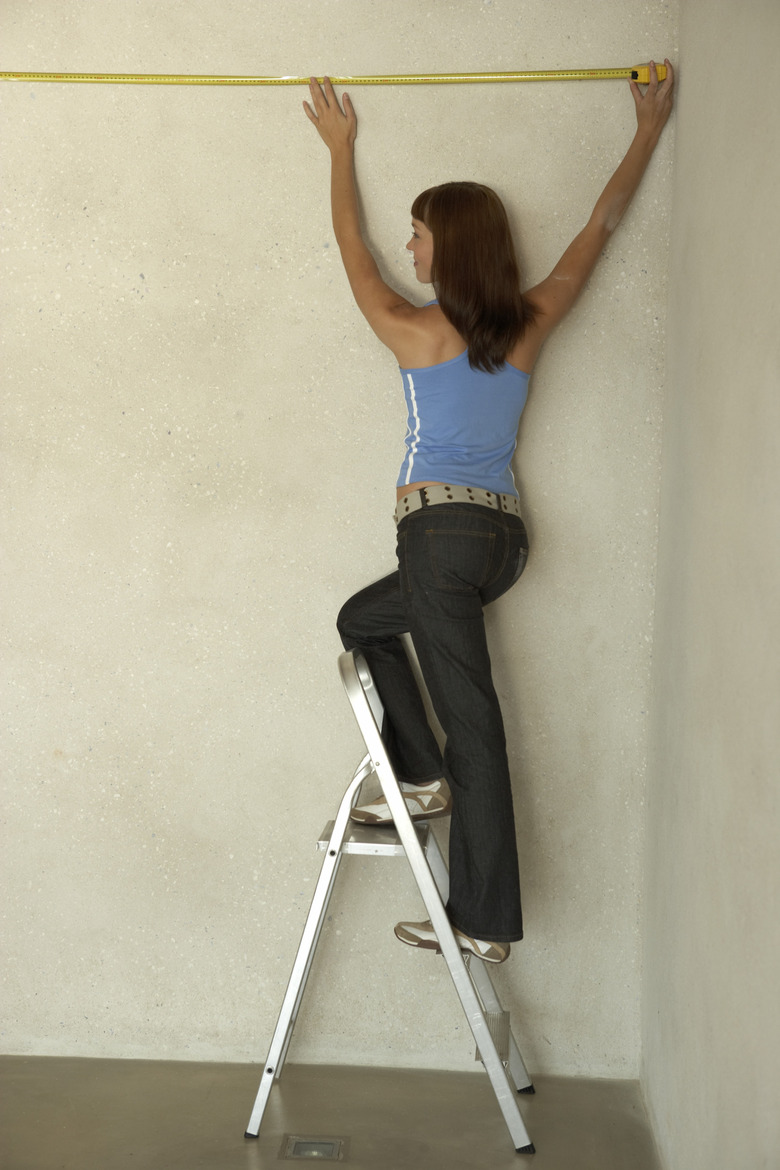How To Calculate The Degrees Of Slope On The Ceiling
Things Needed
-
Laser level
-
Tape measure
Tip
A laser level may be a self-leveling unit or a small laser built into the end of a normal builder's level. The laser beam extrapolates a horizontal line by projecting a dot onto a distant wall. The dot and the level lie on the same horizontal line.
Warning
Slope may vary across the ceiling and in different directions. A ceiling that bows in the middle forms a curve in all directions, whereas a ceiling subject to subsidence may slope evenly and in only one direction.
When a ceiling slopes, the floor may do so, too, so the ceiling and floor remain parallel to each other. Measuring the difference in ceiling height above the floor is not, therefore, a reliable way to determine the ceiling slope. You need to establish a horizontal reference point and base your calculations on differences in height from that line. The theory is identical to that used by builders who establish a horizontal datum line from which all their measurements are taken. A laser level makes the creation of your datum line a straightforward process.
Step 1
Establish, by eye, the lower end of the sloping ceiling. Position the laser tight against the wall where it meets the ceiling and point it toward the opposite end of the room. Align the laser beam parallel to the direction in which you want to measure the angle of slope.
Step 2
Switch on the laser and adjust it until is it perfectly horizontal. Get an assistant to mark the position of the laser dot on the opposite wall.
Step 3
Measure the distance between the laser level and the laser dot. This is the length of the ceiling.
Step 4
Measure the distance vertically up the wall from the laser dot to the ceiling. This is the difference in height between the ceiling at one end of the room and at the opposite end of the room.
Step 5
Substitute the ceiling length and the difference in height into the equation: Tangent of the angle of slope = (difference in height / length of ceiling). For example, with a length of 20 feet and a difference in height of 1 foot, the tangent of the angle of slope is 0.05 (1/20 = 0.05).
Find the angle by looking up the arc tangent of the ratio. For example, if the tangent of the angle equals 0.05, the angle equals arc tangent 0.05. To complete the example, arc tangent 0.05 = 2.86, so the ceiling slopes at an angle of 2.86 degrees.
